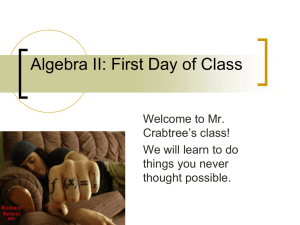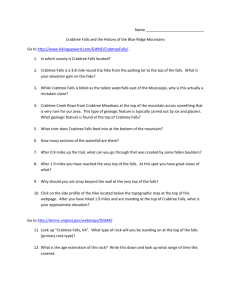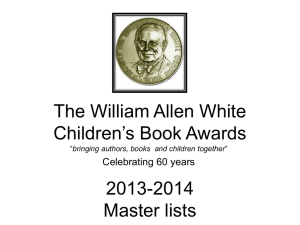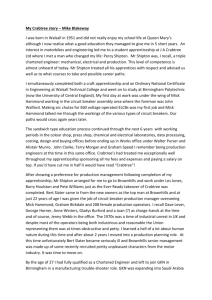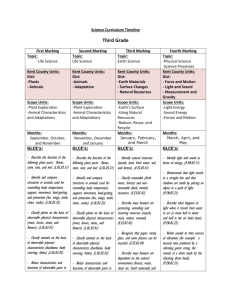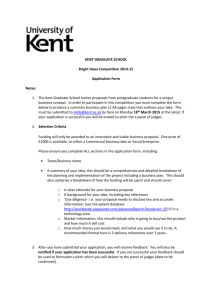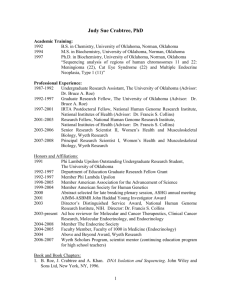First Grade Timeline - Airport Community Schools
advertisement
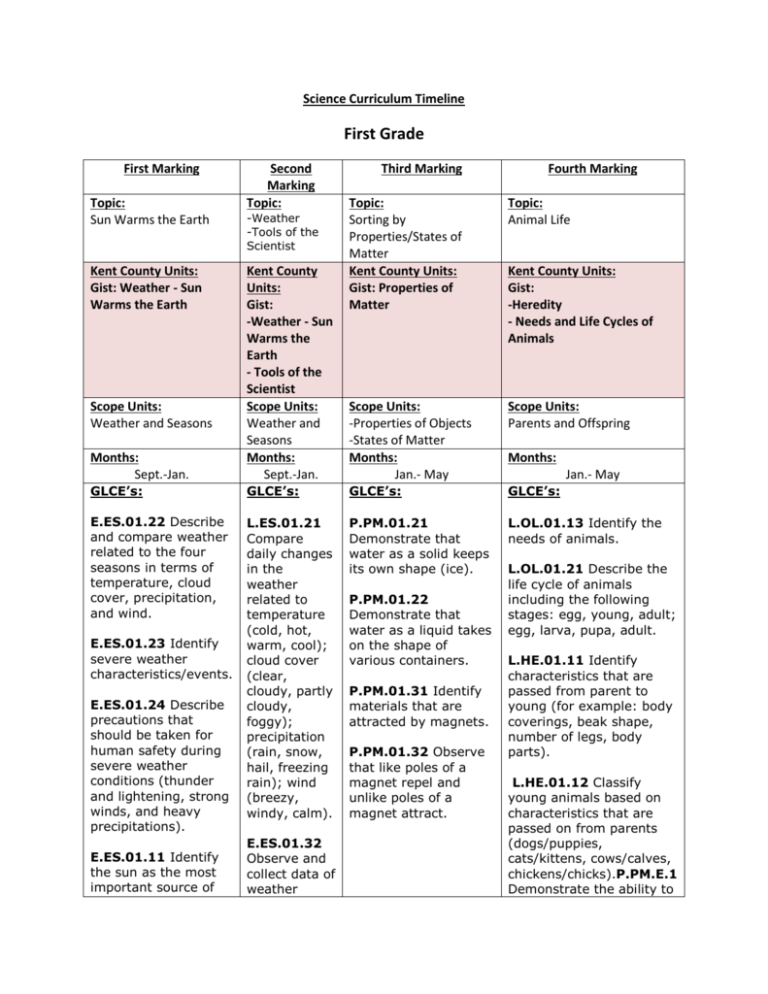
Science Curriculum Timeline First Grade First Marking Topic: Sun Warms the Earth Kent County Units: Gist: Weather - Sun Warms the Earth Second Marking Topic: -Weather -Tools of the Scientist Third Marking Fourth Marking Topic: Sorting by Properties/States of Matter Kent County Units: Gist: Properties of Matter Topic: Animal Life Scope Units: -Properties of Objects -States of Matter Months: Jan.- May Scope Units: Parents and Offspring Months: Sept.-Jan. Kent County Units: Gist: -Weather - Sun Warms the Earth - Tools of the Scientist Scope Units: Weather and Seasons Months: Sept.-Jan. GLCE’s: GLCE’s: GLCE’s: GLCE’s: E.ES.01.22 Describe and compare weather related to the four seasons in terms of temperature, cloud cover, precipitation, and wind. L.ES.01.21 Compare daily changes in the weather related to temperature (cold, hot, warm, cool); cloud cover (clear, cloudy, partly cloudy, foggy); precipitation (rain, snow, hail, freezing rain); wind (breezy, windy, calm). P.PM.01.21 Demonstrate that water as a solid keeps its own shape (ice). L.OL.01.13 Identify the needs of animals. Scope Units: Weather and Seasons E.ES.01.23 Identify severe weather characteristics/events. E.ES.01.24 Describe precautions that should be taken for human safety during severe weather conditions (thunder and lightening, strong winds, and heavy precipitations). E.ES.01.11 Identify the sun as the most important source of E.ES.01.32 Observe and collect data of weather P.PM.01.22 Demonstrate that water as a liquid takes on the shape of various containers. P.PM.01.31 Identify materials that are attracted by magnets. P.PM.01.32 Observe that like poles of a magnet repel and unlike poles of a magnet attract. Kent County Units: Gist: -Heredity - Needs and Life Cycles of Animals Months: Jan.- May L.OL.01.21 Describe the life cycle of animals including the following stages: egg, young, adult; egg, larva, pupa, adult. L.HE.01.11 Identify characteristics that are passed from parent to young (for example: body coverings, beak shape, number of legs, body parts). L.HE.01.12 Classify young animals based on characteristics that are passed on from parents (dogs/puppies, cats/kittens, cows/calves, chickens/chicks).P.PM.E.1 Demonstrate the ability to heat, which warms the land, air, and water on the Earth. conditions over a period of time. E.ES.01.12 Demonstrate the importance of sunlight and warmth in plant growth. E.ES.01.31 Identify the tools that might be used to measure temperature, precipitation, cloud cover and wind. Kent County Vocabulary: Kent County Vocabulary: Kent County Vocabulary: Kent County Vocabulary: New: blizzard foggy safety thunderstorm breezy freezing rain seasons tornado calm hail severe weather warm clear hot snow weather cloud lightning spring weather conditions cloud cover partly cloudy strong winds wind cloudy precaution summer wind sock cold/cool precipitation Sun wind vane daily weather patterns rain (See Weather Vocabulary from First Quarter) Prerequisite Vocabulary: Pull Push Shape Size Prerequisite Vocabulary: animal observation shape size New: attract liquid properties small color (common color words) magnet repel solid ice poles sink/float sort large New: beak shape fur parent skin body covering hair scales young feather Prerequisite Vocabulary investigation measurement observation tool New: balance data non-standard unit Enrichment Vocabulary capacity length predict taller container light prediction tallest cup lighter question unit distance long sort objects according to observable properties such as color, shape, size, sinking and floating. Enrichment Vocabulary: absorbent flexible/firm light/lighter rod magnet bar magnet force like poles rough/smooth big/ bigger Enrichment Vocabulary alike claw eye color similarities backbone cow/calf inherited wing cat/kitten differences limb young chicken/chick dog/puppy number of legs sunny windy fall rain gauge temperature winter fog Enrichment Vocabulary: atmosphere evaporation ice severe weather watch autumn extreme cold inches sky blow Fahrenheit invisible solar Celsius fog meteorologist source of heat centimeter graph moisture south compare heat north thermometer condensation heat wave percentage tornado siren dew humidity predict warning east hurricane seasonal weather patterns west Scope Vocabulary: Severe weather Thunderstorm Lightning Tornadoes Blizzards short volume equal longer shorter weigh estimate longest shortest weight heavier than measure tall width height hard/harder long/longer short/shorter breakable/unbreakable hardness magnetic poles soft/ softer cold/colder heavy/heavier non-magnetic texture container horseshoe magnet 0pposite poles useful disc (ring) magnet hot/hotter Scope Vocabulary: Scope Vocabulary: Sort Properties Poles Solid Liquid Scope Vocabulary: Needs of Animals Life cycle Egg Young Breezy Wind Windy Strong winds Safety Seasons Summer Fall Winter Spring Temperature Cool Warm Hot Cold Cloud cover Precipitation Rain Snow Sunny Precautions Trade Books: Branley, Franklyn. Flash, Crash, Rumble, and Roll. New York: HarperCollins, 1985. DeWitt, Lynda. What Will the Weather Be? New York: HarperCollins, 1991. Dorros, Arthur. Feel the Wind. New York: Crowell, 1989. Trade Books: Technology: Lab Kits: Magnet Push Pull Attract Repel Adult Larva Pupa Characteristics Parents Air Water Food Beak shape Body coverings Feathers Fur Skin Hair Scales Trade Books: Trade Books: Branley, Franklyn M. What Makes a Magnet? New York: HarperCollins, 1996. Animal Life Cycles. 100% Educational Videos. 2002. Discovery Education. 1 July 2009 Challand, Helen J. A New True Book: Experiments with Magnets. New York: Children’s Press, 1986. Bennett, Paul. Changing Shape. Austin, TX: Raintree Steck-Vaughn, 1994. Gibbons, Gail. Weather Forecasting. Salem, OR: Four Winds Press, 1987. Cole, Joanna. The Magic School Bus Ups and Downs: A Book About Floating and Sinking. New York: Scholastic, 1997. ---. Weather Words and What They Mean. New York: Holiday House, 1990. Hewitt, Sally. Amazing Materials. New York: Crabtree Publishing, 2008. Kalman, Bobbie, and Kathryn Smithyman. Changing Seasons. New York: Crabtree Publishing, 2005. MacAulay, Kelley, and ---. Hear This! New York: Crabtree Publishing, 2008. ---. Look Here! New York: Crabtree Publishing, Carle, Eric. Does a Kangaroo Have a Mother Too? New York: HarperCollins, 2000. Greenway, Shirley. Animal Q&A: Whose Baby Am I? Nashville, TN: Ideals Children’s Books, 1992. Guarino, Deborah. Is Your Mama a Llama? New York: Scholastic, 1989. How Plants Grow. 100% Educational Videos. 1998. Discovery Education. 7 July 2009 Johnson, Sylvia. Inside an Egg. Bobbie Kalman. Changing Weather: Storms. New York: Crabtree Publishing, 2006. Stolz, Mary. Storm in the Night. New York: Harper and Row, 1988. Technology: Lab Kits: 2008. ---. Smell It! New York: Crabtree Publishing, 2008. Minneapolis, MN: Lerner Publications, 1982. Kalman, Bobbie. Animals Grow and Change. New York: Crabtree Publishing, 2008. ---. Tastes Good! New York: Crabtree Publishing, Kalman, Bobbie, and 2008. Jacqueline Langille. What is a Life Cycle? New York: ---. Touch That! New Crabtree Publishing, 1998. York: Crabtree Publishing, 2008. Simon, Seymour. Wild Babies. New York: HarperCollins, Lobel, Arnold. Frog and 1997. Toad Are Friends. New York: HarperCollins, Technology: 1979. Properties of Matter, Part 1. 100% Educational Videos. 2003. Discovery Education. 30 June 2009 Reid, Margarette. The Button Box. New York: Penguin Putnam Books, 1995. Spier, Peter. People. New York: Double Day and Company, 1988. Mezzanotte, Jim. How Water Changes (States of Matter). Pleasantville, NY: Weekly Reader, 2006. Zoehfeld, Kathleen. What is the World Made Of? All About Solids, Liquids, and Gases. New York: HarperCollins Publishers Inc., 1998. Technology: Lab Kits: Lab Kits:
